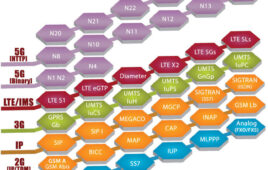In 2016, many new enterprise solutions were introduced to help organizations improve productivity and collaboration among employees. At the same time, consumer messaging platforms began to infiltrate the enterprise, but as they grew in popularity, concerns regarding security also increased. This was due to the high-profile security vulnerabilities that made the headlines in 2016, impacting everyone from senior political candidates to well-known organizations like Deutsche Bank and even everyday internet users.
These vulnerabilities inherently threaten the adoption of new technology platforms in the enterprise, as concern grows around their security. But because employees are already familiar with and using messaging apps in their everyday lives, not using mobile messaging platforms or banning them completely from the enterprise isn’t an option. Despite security warnings and even well-known breaches, employees still resort to these platforms. A study conducted by Infinite Convergence Solutions found 43 percent of employees use unsecure consumer messaging applications, like Facebook Messenger and WhatsApp, in their daily workplace communication.
With security a key point of concern across the enterprises, and especially within the fast-growing mobile messaging segment, IT departments are tasked with locking down communication. But this doesn’t just mean among their own employees. They also must be cognizant of security vulnerabilities when their employees communicate with the organizations outside partners and vendors – the entire extended enterprise ecosystem.
Defining an Extended Enterprise Ecosystem
Nearly all employees within an organization communicate with some form of external contact, be it an outside partner, stakeholder, vendor, or customer. While enterprises are getting better at ensuring their communication among internal employees is secure, thanks to the rise of secure internal mobile messaging services and greater email admin controls, it’s much harder to control and secure outbound, external communication. So far, enterprises have adopted messaging apps and services that ensure encrypted communication from employee to employee within the one organization that utilizes the service. But this is not how business works – employees must communicate with those outside of the organization and they’re increasingly using mobile messaging to do so.
To better understand enterprise ecosystem security, consider how messaging platforms are commonly used in the enterprise. An organization’s IT department sets up a secure, encrypted, internal service for everyone in the organization. But it doesn’t provide a corresponding secure option for external communications with the aforementioned partners, stakeholders, vendors, and customers who are a part of the extended ecosystem. What good is a communication channel if it can’t be used for everyone you need to communicate with?
This leaves employees to rely on alternative communication methods. They may communicate sensitive business information with their boss via a secure messaging or email service, but when they need to quickly get ahold of a consultant or contractor, they’re using messaging apps or services that they likely use in their personal life. We already know these platforms are unsecure and fail to mimic the same security found on the enterprise-grade platform the organization has implemented. This then completely compromises the security put in place to protect sensitive information and documents from being shared on unsecure platforms.
So when we talk about extended ecosystem security, we’re discussing how to maintain security and encrypted communication not only among employees, but also among employees and outside partners, stakeholders, vendors, and clients.
Extended Ecosystem Security in Practice
One option for the organization which already has a secure internal mobile messaging service is to ask their ecosystem network to also implement the service company-wide. This is largely outside of the organization’s control, however. The good news is we’re seeing messaging services take notice in enterprise ecosystems and develop specific features to extend secure messaging to outside organizations.
This way, users on the messaging service can exchange messages with virtually anyone, including what we call “guest users.” These guest users are guaranteed the same level of security and protection for their messages as the original employee on the service. We will also see this same idea extend into other communication methods to increase collaboration among businesses, while still guaranteeing security.
In 2017, we will see increased attention on enabling secure collaboration among entire enterprise ecosystems. IT departments will have a greater role in monitoring not just what their own employees are communicating, but also how they are communicating with outside partners, stakeholders, vendors, and clients. Therefore, IT departments are also going to be increasingly put in a position to lead the charge and drive adoption of secure platforms and services that enable extended security to those inside and outside of the enterprise.




